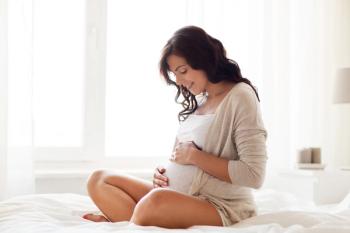
Lower-dose estradiol vaginal cream effectively relieves postmenopausal dyspareunia
A lower-dose estradiol vaginal cream than is currently available in the United States was an effective and well-tolerated treatment for dyspareunia in postmenopausal women, according to a recent phase 3, randomized, multicenter, double-blind, placebo-controlled trial.
A lower-dose estradiol vaginal cream than is currently available in the United States was an effective and well-tolerated treatment for dyspareunia in postmenopausal women, according to a recent phase 3, randomized, multicenter, double-blind, placebo-controlled trial. In the study, results of which were published in
Although over half of postmenopausal women have symptoms of vulvovaginal atrophy (VVA), it is typically underdiagnosed and undertreated, reported the study authors. All of the women in the current trial had signs and symptoms of VVA and reported dyspareunia as the most bothersome symptom of VVA. A self-administered 4-point scale (0=no dyspareunia to 3=severe dyspareunia) was used to assess severity of dyspareunia at screening and weeks 2, 4, 8, and 12 of the trial. Patients were also asked to self-assess vaginal/vulvar itching, dysuria, and vaginal dryness, and vaginal bleeding with intercourse on a 4-point scale (0=none, 3=severe), and investigators assessed extent of vaginal atrophy, pallor, dryness, friability, and petechiae on a 4-point scale (0=none, 3=severe) at screening and weeks 2, 4, 8, and 12 of the study. In addition, investigators measured vaginal cytology and pH at baseline and week 12.
Estradiol vs. Placebo Cream Results
By the end of the study at 12 weeks, estradiol cream had significantly reduced severity of dyspareunia (mean change from baseline -1.5 ±1.0 vs. -1.2±0.9 for placebo). The statistically significant positive impact on dyspareunia severity was first seen by week 8. The active treatment also decreased vaginal pH and percentage of parabasal cells and increased percentage of superficial cells in comparison to placebo cream over 12 weeks. Estradiol cream significantly reduced the severity of vaginal dryness, but not vaginal/vulvar irritation and itching, compared to placebo at 12 weeks. Bleeding after intercourse was reduced in both groups and was statistically significant at P = 0.006 for estradiol cream at week 12. The effect on severity of dysuria could not be reported due to study design issues, but the investigators stated that there were “no discernable differences” between groups.
In terms of safety, approximately half of subjects in both groups reported at least one adverse event (AE). Vulvovaginal mycotic infection was the most frequently reported treatment-emergent AE, affecting 6.9% of women in the estradiol group and 3.3% of women in the placebo group. Infection might be a consequence of estradiol-mediated lowering of vaginal pH, a change in composition of the vaginal microbiome, or a direct effect of estrogen on Candida species in the vagina, suggested the authors. Overall, the lower-dose estradiol cream was well-tolerated.
Extended-Duration Trials Sought
Vaginal administration of estradiol avoids appreciable systemic estrogen exposure, making it an attractive route of delivery to many patients who have concerns about hormone exposure and AEs related to estrogen use. It may also be an option for women who cannot tolerate higher doses of estrogen, according to the authors. However, few lower-dose estradiol trials have been conducted lasting longer than 12 weeks, and longer-term trials are required to further establish the safety of the formulation.
Newsletter
Get the latest clinical updates, case studies, and expert commentary in obstetric and gynecologic care. Sign up now to stay informed.











